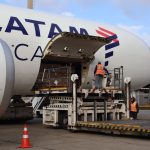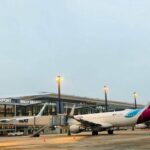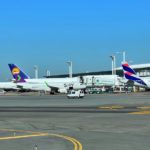Boeing presented the results of its activity during the first quarter of 2024. The American manufacturer reduced the production rate of the 737 MAX and 787 Dreamliner aircraft families.
The production rate of the 737 MAX dropped by 40% compared to the first quarter of 2023. In the first quarter of 2024, 67 aircraft from the 737 family were delivered, whereas in 2023, 113 had been dispatched.
737 MAX Production
According to Boeing’s Chief Financial Officer, Brian West, this slowdown was induced to improve the company’s quality and safety management systems. This follows the incident involving an Alaska Airlines 737-9 where part of the fuselage detached during flight.
Boeing must demonstrate to the U.S. justice system and the Federal Aviation Administration (FAA) that its production processes meet established quality and safety standards. To achieve this, the FAA imposed a production cap of 38 units of the 737 MAX per month.
Boeing has decided to reduce the production rate of its flagship product below the FAA’s indication. According to West, the company will keep 737 production levels lower during the first half of the year and then raise them to 38 units, as specified by the FAA.
Boeing’s CEO, Dave Calhoun, stated that «the FAA did not demand the reduction of production rates, it was us who demanded it because we are determined to be proactive.»
Losses in the First Quarter
The consequences of the Alaska Airlines 737-9 incident required Boeing to pay out over $4 billion. Part of these expenses went towards compensating airlines that had to ground their 737-9 fleets.
The airlines most affected by the 737-9 suspension were Alaska Airlines and United Airlines. Alaska has received a total of $162 million in cash so far, while the amount received by United Airlines is unknown as the airline has not disclosed the figure.
Boeing is expected to pay a total of $443 million in compensation to its customers for grounding the 737-9. During the first quarter of 2024, Boeing recorded losses of $335 million.
Issues with the 787
The 737 MAX is not the only Boeing product experiencing a slowdown. The 787 Dreamliner also has a decrease in production rate. The difference in aircraft delivered during the first quarter of 2023 and the same period in 2024 is only two units, having dispatched 13 in 2023 and 11 in 2024.
In the case of the Dreamliner, this decrease in production rate is due to the lack of certain components, specifically the heat exchangers.
This component was produced in Russia, and after the conflict with Ukraine began, the supplier had to move its production to another country. This reduced the manufacturing capacity of the component, unable to keep up with the pace of 787 production.
It is expected that in the coming months, the production rate of the 787 Dreamliner will begin to increase gradually. The company has communicated with its customers to inform them that deliveries are expected to start increasing at a slower pace.
In addition, Boeing is facing an investigation into the manufacturing of the 787 and 777 families due to a complaint filed by a former company employee. Sam Salehpour appeared before a Senate hearing last week to report flaws in the production of these aircraft.














